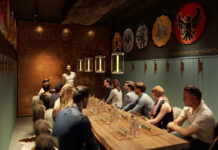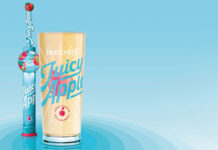Diversity and product education are key to world beer category


A STRONG selection of different beer styles and a well-educated bar staff are two of the key requirements for making the most of the world beer category, say brand owners.
World beer is said to be in growth in the Scottish on-trade – up 19% in value over the last year, according to Heineken – and it seems that consumers remain keen to discover new brands and products.
“Consumers’ knowledge and interest in the wide variety of beer has certainly broadened and they are more open to trying different beers,” said Audrey Schillings, senior brand manager at Heineken International, which counts Krusovice, Cerne and Birra Moretti in its portfolio.
And Ian Risby, Scottish sales manager for Wells & Young’s, the company behind Spanish beer Estrella Damm in the UK, said there has been a “sea-change on perceptions of what is considered the reward for money spent”.
Consumers are increasingly looking for real quality now, said Risby, and fewer beer drinkers are making purchases based on price alone.
“What we are seeing is an increase in consumers looking for a treat when they make purchase decisions at the bar,” he said.
In terms of variety, operators are advised to stock a range that covers a number of bases.
A huge number of beers is not necessary, say brand owners, as long as the range covers a number of different styles, strengths and countries of origin.
“When considering their selection, licensees should identify their clientele and recognise that world beer drinkers are customers that value authenticity and new experiences,” said Simon Green at Global Brands, supplier of Amigos Tequila beer.
“A dedicated world beers range should cover taste, ABV and country of origin.”
Graham Archibald, national account director for world beer specialist Morgenrot, said variety was key to using beer as a “selling tool”.
He added: “I’m not saying you need a list of 300 beers, but consumers are showing a willingness to experiment so make sure you offer a selection of beer styles at different price points from a range of countries.”
In fact, some companies recommend keeping the world beer selection to a select few brands.
Sam Rhodes, director of customer marketing at Miller Brands (supplier of Peroni Nastro Azzurro, Kozel and Pilsner Urquell), said that between five and six brands is optimal.
According to Rhodes, consumers will only look at five or six different brands before they decide what to buy, and therefore it is crucial that outlets avoid stocking products that ‘overlap’ each other on flavour and provenance.
And with more consumers showing an interest in provenance, individuality and authenticity have become hugely important to world beer drinkers, according to Risby.
“Provenance is very important to consumers when they look for a world beer,” said Risby.
“They want something that has genuine credentials, meaning that it is actually brewed in the country of its origin.”
At Heineken, Schillings also noted the importance of a world beer brand’s heritage.
“An authentic brewing heritage and the fact that a beer is brewed at its original source and is imported are key factors driving consumers’ purchasing decisions when they are buying into the world beer sector,” she said.
However, even the most robust world beer range might not live up to its potential without the proper staff training, it seems.
Brand owners say it’s crucial that the staff serving the beer are able to converse with customers about the available products and make recommendations.
Training can also help to ensure that the beers are poured and presented in the correct way – further reinforcing their positioning as premium products.
“The way the beer is served at the bar is crucial as people will appreciate the premium nature of world beers if they believe they are getting a product that is cared for,” Risby added.
“This means providing it at the right temperature, poured to create the right head and served in a branded glass.
“The theatre and experience that gives a world beer its own identity and distinguishes it from its competition continues to offer retailers growth potential and enables them to experiment in new markets.”
Staff training can also incorporate food matching, opening the door for an ‘up-selling’ opportunity.
“Select beers which can work with the snacks and dishes on your menu and communicate this to customers through the staff, menu and promo boards,” said Archibald at Morgenrot.
“Just like staff in Starbucks will try and up-sell you a muffin with your coffee, on-trade staff have to push food and snacks which can complement the different beers they sell.”
Image – Miller Brands said it’s important that operators avoid overlap in their world beer selections.
























